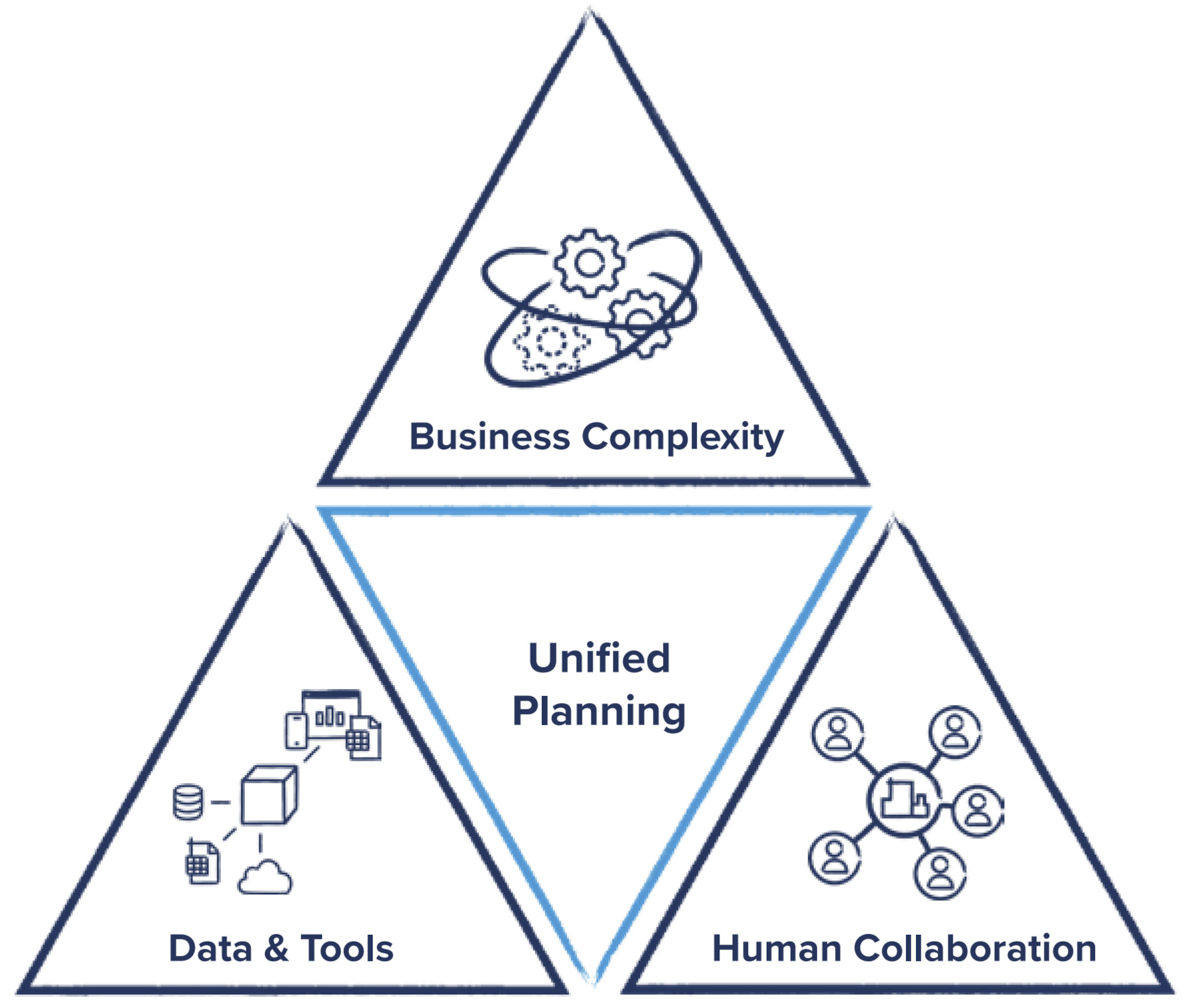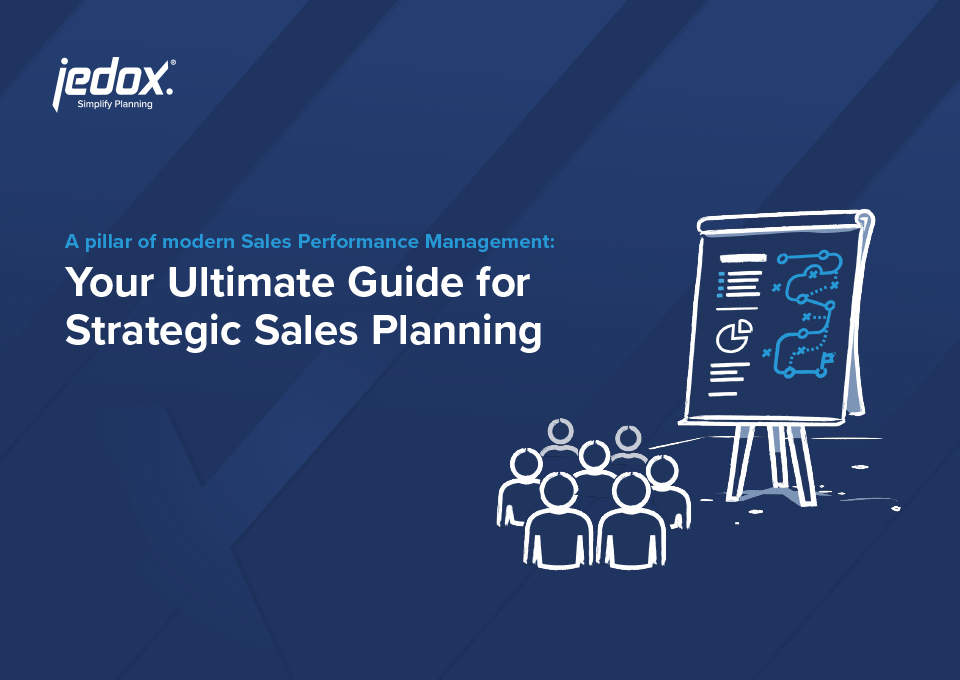Foreword
Planning in a post-pandemic environment continues to bewilder many sales organizations. The idea that change can simply be “managed” feels more and more obsolete as we expect our processes and people to be perpetually agile and adaptable. Business performance, both in the public and private markets, is highly correlated with adaptability, and sales teams are feeling the pressure to deliver on aspirational targets amid an ever-increasing amount of uncertainty.
An annual cadence to strategic sales planning backed by manual excel processes no longer sufficiently enables companies to plan for the reality of doing business in today’s market. Dynamic sales planning accomplished by incorporating AI into sales performance management (SPM) can produce more accurate and frequent predictions that result in proactive decision-making and actions. Pipeline growing faster than expected? Optimize your capacity planning before recruiting. More people buying online? Shift resources from in-store to online.
As companies and sales organizations grapple with the impact of the global labor shortage, also known as “The Great Resignation,” sales teams struggle to deliver against plans that may be thoughtful but aren’t particularly malleable. In an environment in which seemingly all labor is poachable, the difference between companies that must hire who is available and companies that can hire who they need is the ability to plan with an advanced degree of intelligence and agility.
Transparency of sales performance is also increasingly top of mind as the ability to identify, replicate and communicate successes is critical to growing and motivating a high-performing sales team. Additionally, compliance (like Sarbanes-Oxley) and readiness for potential labor disputes are key drivers of planning transparency. Lastly, sales teams and the customers they serve are becoming more diverse, and the days of shadow processes and institutionalized inequities are waning.
Manual incentive compensation management (ICM) processes are often the forcing mechanism that drives companies to consider a sales performance management (SPM) solution. While the desire to automate these processes makes intuitive sense, it’s important to view SPM not only as a way to automate ICM, but a comprehensive and strategic business solution that correlates data and informs better decision-making.
Strategic sales planning overview
The impact on finance, sales, and IT
On the planning horizon, a distinction is made between strategic, tactical and operational planning. Strategic sales planning is considered the engine of the sales organization. It defines the fundamental goals of a company within a time horizon of more than five years, so that you know how much horsepower you can put on the road.
In addition, strategic sales planning ensures that all sales activities are aligned with corporate goals and coordinated with plans and measures of other corporate divisions. Conscientious top-down planning lays the foundation for a successful go-to-market (GTM) strategy. It forms the cornerstone for positioning the company on the market in the long term and ensuring sustainable growth. In the day-to-day business of operational planning and budgeting, where revenues, sales figures, costs and other measurable values determine the path, there is often a lack of alignment with the overarching strategy. The lack of alignment and lack of collaboration between budgeting and sales strategy causes a deficiency in operational excellence that can only be achieved with a clear strategic framework for action. At its best, strategic planning acts as a missing piece of the puzzle, seamlessly aligning with a company’s vision, mission and values and providing a clear roadmap.
The challenge of multidimensional complexity
Strategic sales planning often misses the mark for organizations due to one or a combination of three dimensions: business complexity, human collaboration, and data and tools. This multidimensional aspect of a company dramatically increases the complexity of the sales planning process and makes it difficult to implement with manual methods and processes.
Business complexity
From management and customer expectations to strategy changes and market volatility, business success depends on internal and external factors. These interrelationships influence a business and define organizational complexity. Globalized markets, technological disruption and changing customer demands are making the business environment more complex than ever before.
Human collaboration
Smooth collaboration between employees is an integral part of the sales planning process. They must share the defined approach. In the individual process steps, they collect data, evaluate it, and thus create the basis for decision-making by the executive board. The collaboration environment should therefore be equipped with the right methods and solutions.
Data and tools
Planning is only as good as the data on which it is based. A high level of reliability and transparency is the result of a successful planning process. This is often reflected in the tools used for data preparation and processing. The higher the need for coordination in a company, the more a supporting solution is required to handle processes in a standardized and integrated manner.

Effective planning means operationalizing complexity. However, reducing complexity must not be at the expense of quality.
Based on automated and integrated processes, all three dimensions can be taken into account in a strategic sales planning process and transformed into opportunities for the company.
“With Jedox, we now control our reporting and sales planning efficiently, and we even get thirsty for more data!”
Oliver Dammann, Sales Controlling, MBG International Premium Brands
Strategy roadmap: five steps of strategic sales planning
The basic framework for improving strategic sales planning is a multistage concept that flows smoothly into operational planning and thus perfectly links the two areas. Each step addresses its own points that need to be dealt with.
How such a concept looks in detail depends on individual parameters such as company size, market cycles and strategic orientation. Nevertheless, we would like to provide you with a general guideline here.
1. Corporate planning
The foundation of planning
The overarching corporate planning provides the general framework for action – the thrust of the planning of individual divisions and departments is derived from it. In this way, it also forms the foundation for strategic sales planning.
2. Analysis tools
Analysis of the actual and target situation
Internal and external influences determine the gap between the target and actual situation. Within the scope of an analysis – with the help of a handful of instruments – potential levers for the further planning process can be identified.
3. Strategy map
The strategy map as a roadmap
In the concrete planning stage, sales goals are formed and underpinned with the corresponding measures and resources. The corporate goals and analysis results from the first two steps form the basis for this.
“What you can imagine, you can build.”
CIO/Head of IT, utilities industry
4. Measure implementation
Now that strategic planning has moved on to operational planning in the previous step, the next step is concrete implementation. It clarifies which measures and activities will be carried out, when and how.
5. Measure review
To ensure the effectiveness and efficiency of the selected measures and activities, performance is monitored at regular intervals. In this way, conclusions can be drawn quickly in the event of a lack of success or exceptional success, and the strategy can be adjusted at any time.
Sales performance management (SPM)
Maximize business value with collaborative, unified sales planning
With increasing complexity across all sales planning processes, the demand for simplified solutions becomes louder. Fragmented processes and manual tasks make the implementation of strategic sales planning cumbersome and challenging.
Spreadsheets or isolated solutions quickly reach their limits – lack of automation and limited data availability disrupt the planning flow. Strategic sales planning forms the foundation for operational and sales planning and provides a framework for evaluating and controlling concrete measures. By creating transparency based on an integrated solution, you have taken the first step toward breaking down multidimensional complexity.
Unified planning increases efficiency and effectiveness across all areas of the company by supporting employees in planning with a software-based solution. It accelerates and simplifies processes while clearly revealing hidden potential.
Improved sales insights allow accurate planning and profitable forecasts to be derived. Decision-makers have access to up-to-date, secure data and information. This enables optimal control of the customer and product mix, capacity planning and sales cycles.
In talent management, transparent data provides motivation and drive.
Benefits of SPM
Not only does the sales department benefit from a sales performance management solution, but also the finance department, IT and human resources. The greatest advantages are more simplicity and optimized resource use throughout the whole company.
CFO/finance
CRO/sales ops
CIO/IT
Director compensation/HR
What makes Jedox stand out?
The Jedox SPM platform allows organizations to align their strategic GTM goals with operational and forecast data. By providing one platform for reporting, incorporating predictive analytics and being user-friendly, thanks to the familiar Microsoft Excel interface.
Success story: Nölle + Nordhorn
A dynamic duo: SAP and Jedox Cloud
Transparent, timely sales insights through AI at Nölle + Nordhorn
Nölle + Nordhorn has implemented a solution for sales performance management to gain a daily updated overview of the business areas. The cloud solution uses the company’s SAP system as a data source and allows management and field sales easy access to individual reports.
The project team partially automated the extensive sales planning processes with the help of Jedox AIssisted™ Planning. The cloud application uses machine learning algorithms to generate default values based on historical SAP values. The sales representatives can adopt these plan values or adjust them manually.
The sales planning has accelerated greatly thanks to Jedox AI. With around 400 customers per sales employee planned in detail in various segments, it saves a considerable amount of time and reduces the workload for the planners, who can usually limit themselves to a more detailed review of their top 20 to 30 customers. With efficient, detailed planning and precise reporting, there is now an accurate basis for decision-making for different target groups. The increased quality of the reporting content also influences sales meetings, making them more efficient by having consistent figures from a single data source, so everyone in the meeting can discuss the same consistent, current data.
“We are well prepared for further growth, increasing data volumes, and new business challenges, because Jedox Cloud scales to our exact needs.”
Bernd Eckert, Director Finance, Nölle + Nordhorn GmbH
Jedox: Key features of an effective solution
Improve your sales insights and look into the future, shorten your budgeting cycles and sharpen your forecast accuracy. Transforming your sales planning with a unified, software-based solution like Jedox adapts your planning processes to the speed of change and takes your sales performance management to a new level.
Jedox enables software-based long-term, top-down strategic sales planning, as well as sales insights and sales forecasts. AI and machine learning support continuous planning and time series prediction for new sales.
Jedox offers you a unified platform for sales planning domains. Become a pioneer in modern sales performance management by optimizing your sales planning with a software-based approach.

